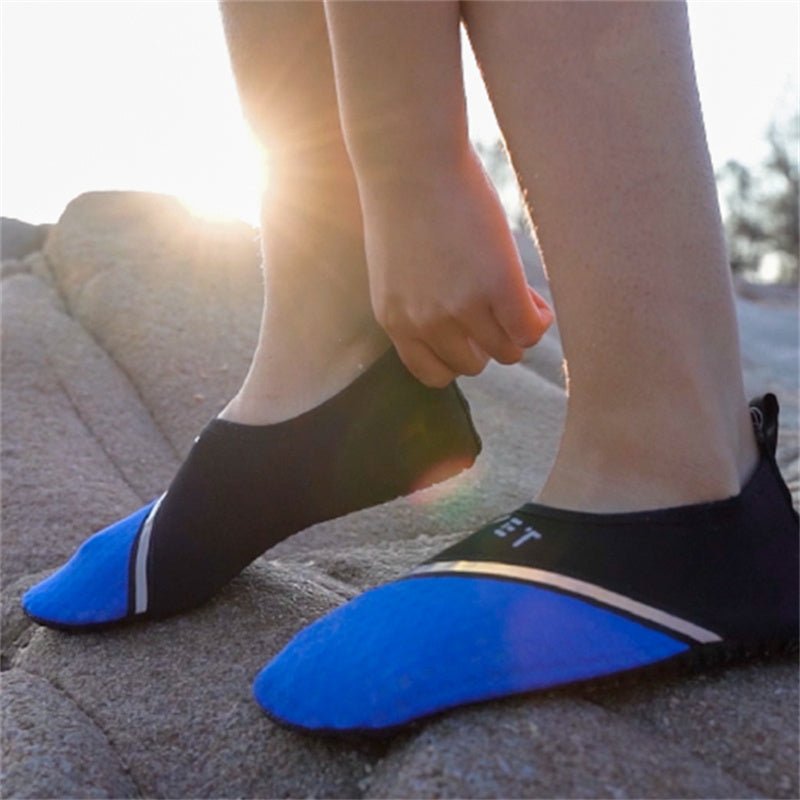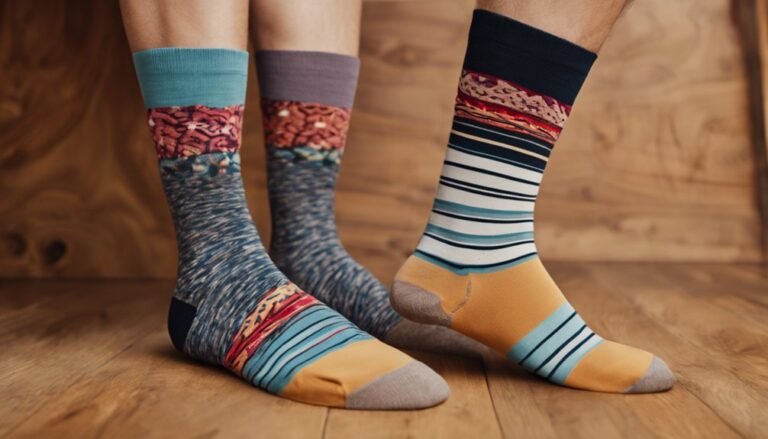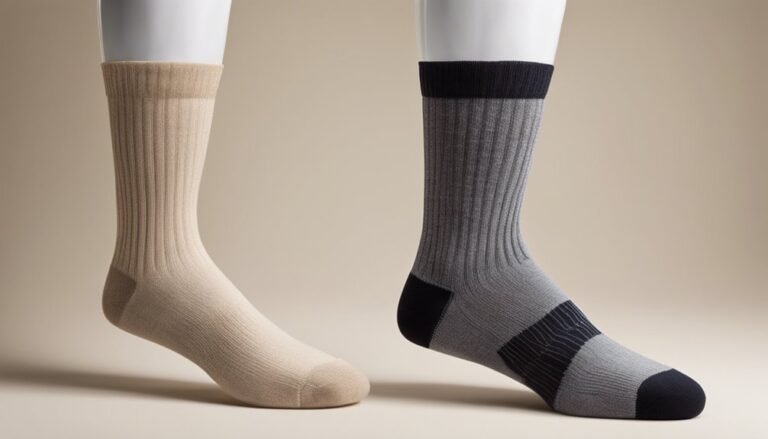Aqua Socks Vs Water Shoes: Which is Best for Your Adventure?
Choosing between aqua socks and water shoes can be tricky. Both have unique benefits for water activities.
Aqua socks and water shoes are popular choices for water sports and beach outings. They protect your feet from sharp objects, hot sand, and slippery surfaces. But which one should you choose? Understanding the differences can help you make the best decision for your needs.
Aqua socks offer flexibility and lightweight comfort, while water shoes provide more support and durability. In this blog post, we will explore the features, pros, and cons of each option. This will help you decide which one is the perfect fit for your next water adventure. Stay tuned to learn more about aqua socks and water shoes!
Aqua Socks: Features And Benefits
Aqua socks are essential for water enthusiasts. They provide comfort and protection. Whether you swim, surf, or explore rocky shores, these socks enhance your experience. Let’s explore their features and benefits.
Material And Design
Aqua socks use lightweight, breathable fabric. This helps keep your feet cool and dry. The material also dries quickly. This prevents chafing and discomfort. Their design includes a snug fit. This ensures they stay on your feet during activities.
Comfort And Flexibility
Aqua socks offer excellent comfort. The soft material feels gentle on the skin. They provide a barefoot feel. This enhances the natural movement of your feet. The flexibility of the socks allows for easy movement. You can bend, stretch, and flex without restriction.
Suitable Activities
Aqua socks are perfect for many water activities. Use them for swimming, snorkeling, and surfing. They are also great for beach volleyball and paddleboarding. Aqua socks protect your feet from hot sand and sharp objects. This makes them ideal for beachgoers.
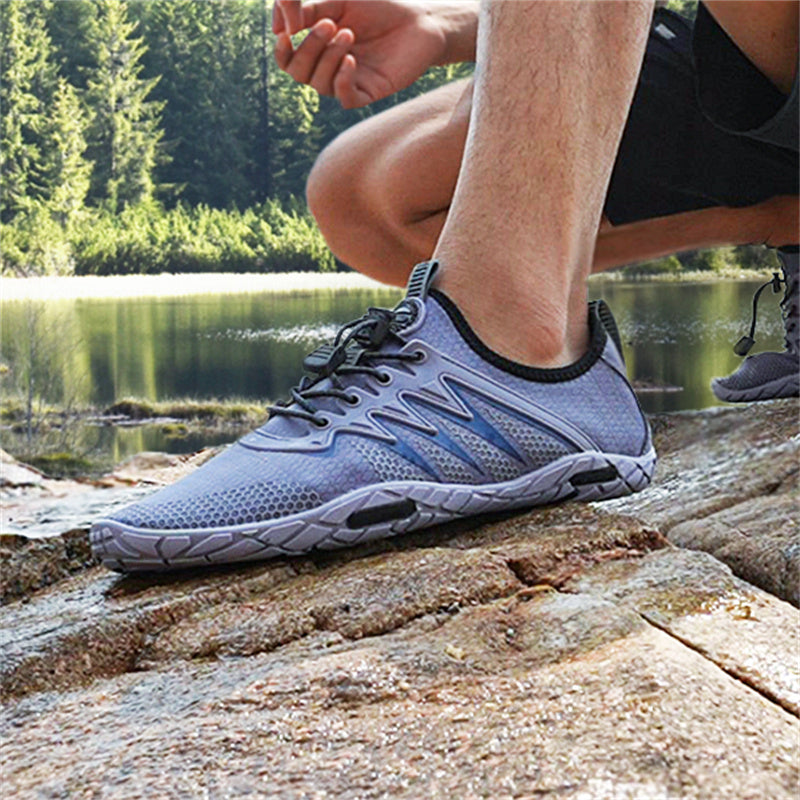
Water Shoes: Features And Benefits
Water shoes are essential for water-based activities. They offer protection, comfort, and stability. Understanding their features and benefits can help you make an informed choice. Let’s explore key aspects of water shoes.
Material And Design
Water shoes use lightweight, quick-drying materials. Common options include neoprene, mesh, and rubber. These materials ensure breathability and comfort. The design often includes drainage holes. These help to expel water quickly. This keeps your feet dry and comfortable.
The soles are usually made of rubber. This provides excellent grip on wet surfaces. Some designs feature adjustable straps. These ensure a snug fit. The closed-toe design protects your feet from sharp objects. This is crucial for safety during water activities.
Durability And Support
Water shoes are known for their durability. The robust materials withstand harsh conditions. Reinforced stitching adds to their lifespan. They offer great support for your feet. The cushioned insoles provide comfort during long wear. Arch support is often included, reducing foot fatigue.
The sturdy outsoles protect your feet from rough terrain. They also provide traction on slippery surfaces. This reduces the risk of slips and falls. The overall construction ensures they can handle various water environments. From rocky shores to sandy beaches, water shoes are reliable.
Ideal Uses
Water shoes are versatile. They are perfect for activities like kayaking, paddle boarding, and river trekking. They protect your feet in and out of the water. Their quick-drying feature makes them ideal for beach trips. You can wear them while swimming or snorkeling.
They are also useful for water sports. Activities like surfing and jet skiing benefit from their grip and protection. Even for casual walks on wet terrains, water shoes are a good choice. They offer the comfort and safety needed for various water-related activities.
Comparing Aqua Socks And Water Shoes
Choosing the right footwear for water activities can be confusing. Aqua socks and water shoes both have their benefits. But which one is right for you? Let’s compare their features to help you decide.
Performance In Different Environments
Aqua socks are lightweight and flexible. They are perfect for sandy beaches and calm waters. They provide a barefoot feel while protecting your feet from hot sand and sharp objects.
Water shoes offer more structure and support. They are better for rocky terrains and slippery surfaces. They provide better grip and stability, making them suitable for hiking and river activities.
Protection And Safety
Aqua socks provide basic protection against minor cuts and abrasions. Their thin material offers a barrier against hot surfaces but not much more.
Water shoes excel in protection. They have thicker soles and reinforced toes. This design shields your feet from sharp rocks and underwater hazards. They reduce the risk of injury in challenging environments.
Ease Of Use
Aqua socks are easy to put on and take off. Their slip-on design is convenient for quick changes. They are also compact and easy to pack.
Water shoes may require more effort to wear due to laces or straps. They offer a snug fit that may take a bit longer to adjust. Despite this, their secure fit provides better support during active use.
| Feature | Aqua Socks | Water Shoes |
|---|---|---|
| Best for | Beaches, calm waters | Rocky terrains, hiking, rivers |
| Protection Level | Basic | High |
| Ease of Use | Very easy | Moderate |
| Flexibility | High | Moderate |
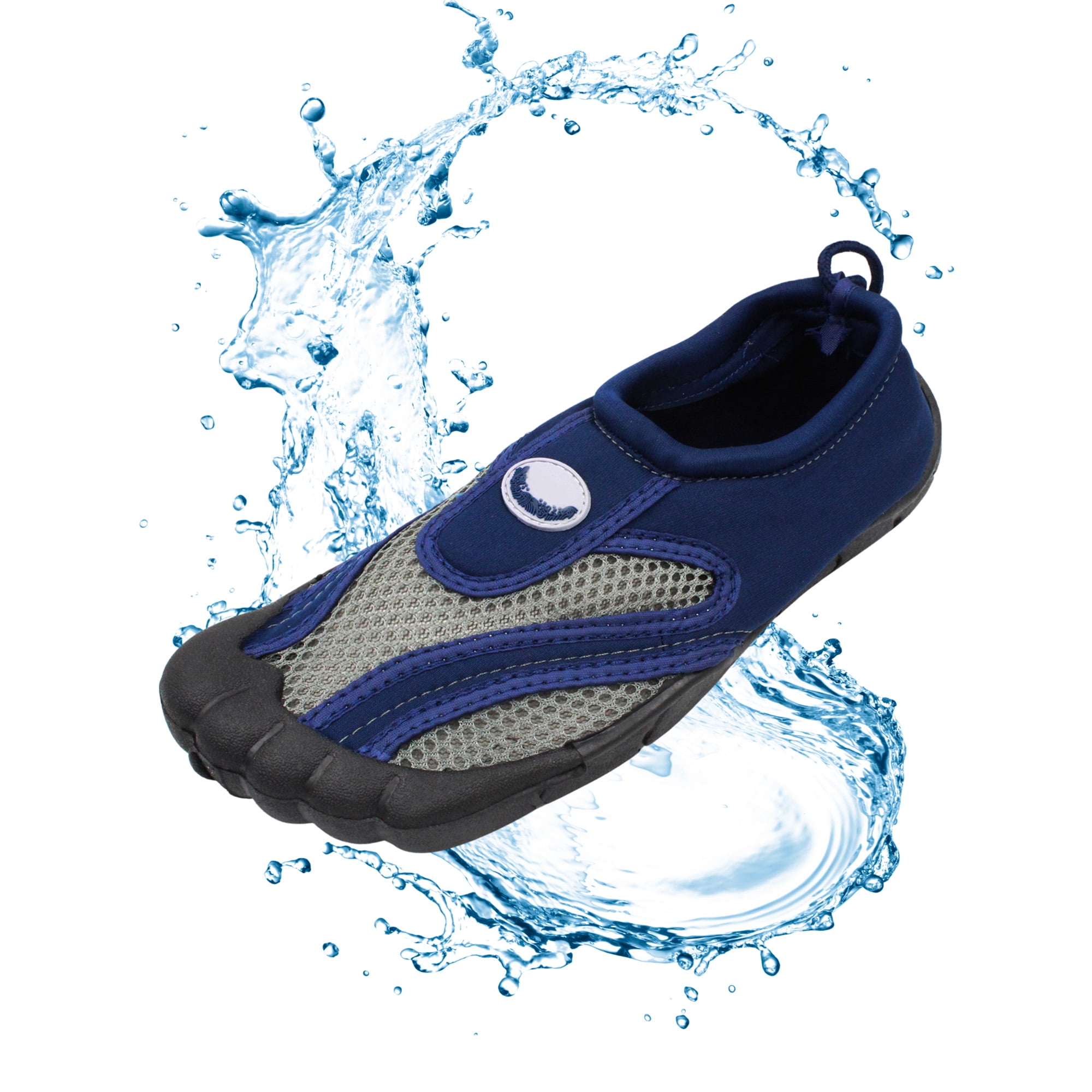
Cost And Value
Choosing between aqua socks and water shoes can be challenging. One major factor is cost and value. Both have unique price ranges and long-term benefits. Let’s explore these aspects to help make an informed decision.
Price Range Of Aqua Socks
Aqua socks are generally more affordable. They typically range from $10 to $30. Their lightweight design and simple construction keep costs low. This makes them an excellent choice for budget-conscious buyers.
Price Range Of Water Shoes
Water shoes often come with a higher price tag. They range from $20 to $50 or more. The added features, such as reinforced soles and better materials, contribute to the higher cost. These features offer more protection and durability.
Long-term Value
When considering long-term value, water shoes often have the edge. Their durable design and sturdy construction mean they last longer. This can offset the initial higher cost.
Aqua socks, while cheaper, may need replacement more frequently. They are less durable and may wear out faster. For occasional use, they offer good value for their price. Frequent users might find investing in water shoes more cost-effective.
Here’s a quick comparison table for better clarity:
| Item | Price Range | Durability |
|---|---|---|
| Aqua Socks | $10 – $30 | Low to Moderate |
| Water Shoes | $20 – $50+ | High |
In the end, consider both the immediate price and long-term value. This will help decide which option best fits your needs and budget.
User Reviews And Experiences
People share mixed opinions on aqua socks versus water shoes. Aqua socks offer flexibility and comfort, while water shoes provide better protection and grip. Both have their own advantages depending on the activity.
When choosing between aqua socks and water shoes, user reviews play a crucial role. Real-world feedback provides insights you won’t find on product descriptions. This section covers common praises and complaints, and tips from experienced users.Common Praises And Complaints
Users often praise aqua socks for their lightweight design. They find them easy to pack and carry. Many appreciate their snug fit and flexibility. They mention how aqua socks feel like a second skin. On the downside, some users complain about durability. Aqua socks may wear out faster with frequent use. A few users also note that they offer less protection on rocky surfaces. Water shoes receive praise for their sturdiness. Users like their durability and strong grip. They highlight the extra protection they provide for feet. Many find them more suitable for rough terrains. However, some users find water shoes heavier. They mention that water shoes can feel bulky. A few users also report longer drying times.Tips From Experienced Users
Experienced users recommend rinsing aqua socks after use. This helps remove sand and salt. They advise drying them in the shade to maintain flexibility. For water shoes, users suggest checking the fit before buying. A snug fit prevents slipping. They also recommend wearing them for short walks first. This helps break them in for comfort. Both aqua socks and water shoes benefit from proper care. Regular cleaning extends their life. Users suggest storing them in a cool, dry place. This prevents mold and maintains quality. By considering these reviews and tips, you can choose the right footwear for your needs. “`
Choosing The Right Footwear
Selecting the correct footwear for your water adventures can be challenging. Should you go with aqua socks or water shoes? Both have their advantages and drawbacks. Understanding your needs and activities will help you make the right choice.
Assessing Your Needs
First, consider what you need from your footwear. Are you looking for comfort or protection? Aqua socks are lightweight and comfortable. They are ideal for sandy beaches. Water shoes provide more protection. They are better for rocky terrains. Assess your environment before choosing.
Matching Footwear To Activities
Your activities will also dictate your choice. For swimming or casual beach walks, aqua socks work well. They offer flexibility and are easy to wear. Water shoes are better for hiking or exploring rocky beaches. They provide grip and support.
| Activity | Recommended Footwear |
|---|---|
| Swimming | Aqua Socks |
| Beach Walking | Aqua Socks |
| Hiking | Water Shoes |
| Rocky Beaches | Water Shoes |
Personal Preferences
Your personal preferences matter. Do you prefer lightweight and flexible shoes? Aqua socks are a good choice. If you need more support and protection, water shoes are better. Consider your comfort and style when making your decision.
In summary, choosing the right footwear depends on your needs, activities, and personal preferences. Both aqua socks and water shoes have their unique benefits. Make your choice based on what suits you best.
Frequently Asked Questions
What’s The Difference Between Aqua Socks And Water Shoes?
Aqua socks are lightweight, flexible, and designed for comfort and protection in water. Water shoes offer more support, durability, and traction for various activities.
Can You Swim In Aqua Socks?
Yes, you can swim in aqua socks. They provide good grip and protect your feet from sharp objects.
What Are Aqua Socks Used For?
Aqua socks protect feet from sharp objects, hot surfaces, and slippery areas during water activities. They offer comfort and grip.
What Are Aqua Shoes Good For?
Aqua shoes provide protection and comfort for your feet during water activities. They prevent cuts, abrasions, and slipping.
Conclusion
Choosing between aqua socks and water shoes depends on your activities. Aqua socks offer flexibility and lightweight comfort. Water shoes provide better protection and grip. Both types have unique benefits. Consider your needs and environment. Do you need more support or prefer freedom of movement?
Decide based on your specific water adventures. Whether you swim, hike, or relax by the shore, picking the right footwear enhances your experience. Stay safe and comfortable in the water with the best choice for you.

